Picture this: you’re walking through a dense forest and suddenly spot those unmistakable orange and black stripes moving through the shadows. Every tiger lover knows that iconic pattern, but here’s something that might blow your mind – each tiger has a unique pattern of stripes that distinguishes it from others, much like a human fingerprint. This isn’t just nature showing off; it’s one of the most fascinating examples of biological individuality on our planet.
What makes these majestic cats even more incredible is that beneath their stunning fur lies a complex world of genetics, development, and evolution that scientists are still unraveling today. From the moment a tiger embryo begins forming in its mother’s womb to the day it prowls through the jungle as an apex predator, its stripes tell a story that’s uniquely its own.
The Genetic Blueprint Behind Every Stripe
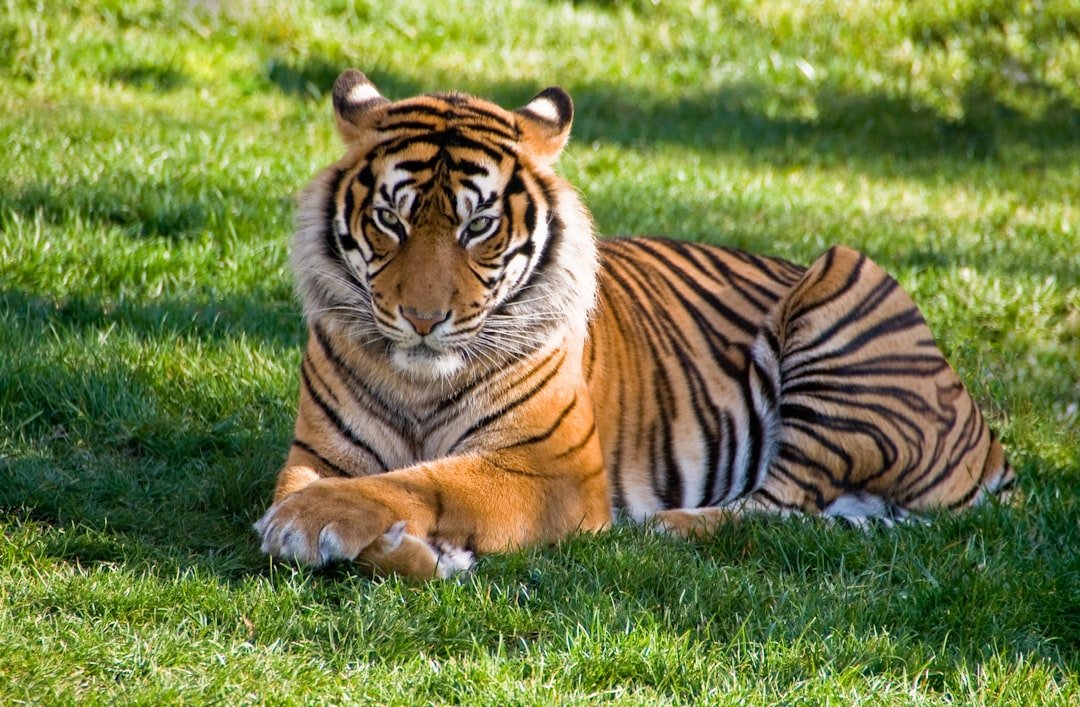
Think of tiger stripes like a biological barcode written in DNA. The genes responsible for the pigmentation of a tiger’s fur are passed down from its parents, and variations in these genes can result in different patterns of stripes. It’s not just one gene doing all the work though – it’s more like a complex orchestra where multiple genetic players create the final masterpiece.
The primary gene responsible for the formation of stripes is the “tabby” gene, also known as the agouti gene. This gene controls the distribution of pigment in the fur, resulting in the characteristic stripes. But here’s where it gets really interesting: another player called the “non-agouti” gene can actually suppress the tabby gene, which would normally result in a solid-colored coat instead of stripes.
The relative contribution of these genes to the formation of stripes varies among different tiger subspecies, resulting in different patterns. This genetic variation is like nature’s way of ensuring that every tiger gets its own unique signature – no photocopies allowed in the wild!
How Tiger Stripes Form in the Embryo
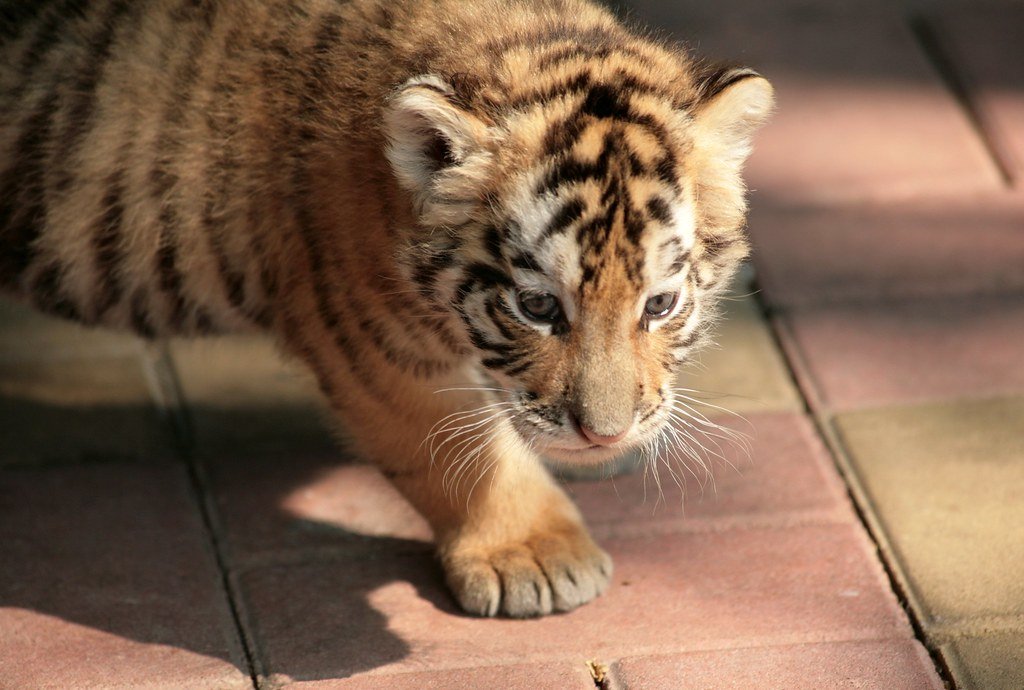
Before a tiger cub even opens its eyes, its destiny as a striped predator is already sealed. A tiger’s coat pattern is already determined before it is born. In the embryo, pigment-producing cells emerge at the point where the spinal column will later develop. These cells then migrate outward across the developing tiger’s body, carrying the genetic instructions that will create those famous stripes.
The process is remarkably similar to how an artist might paint on a canvas, except the canvas is growing and changing as the painting happens. One morphogen activated a stripe colour and the other morphogen inhibited the stripe colour. As these chemicals diffused through the embryo, the stripe pattern would form. Picture it like two invisible forces working together – one saying “make a black stripe here” while the other says “stop, leave this part orange.”
What’s absolutely mind-blowing is that the size of the embryo when this happens actually affects the final pattern. A grown tiger is not a small animal. But, per Turing’s theory, the cat’s patterning indicates that the distribution of morphogens takes place at a time when the tiger embryo is still very small. This tiny timing detail helps explain why tigers have stripes instead of spots!
Alan Turing’s Revolutionary Pattern Theory
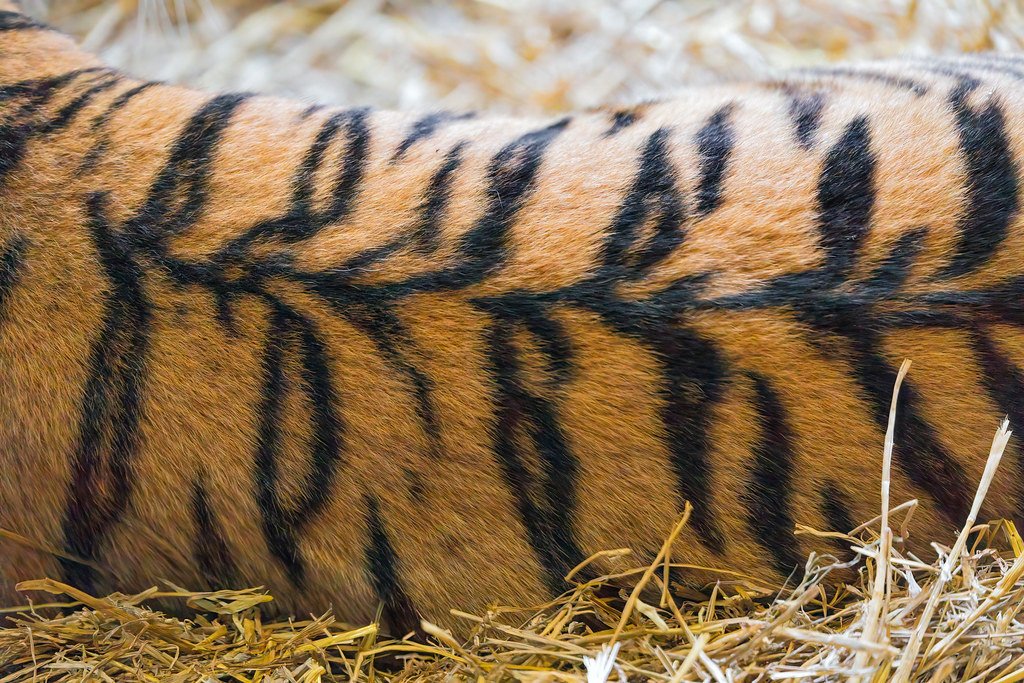
You might know Alan Turing as the brilliant mathematician who helped crack the Enigma code during World War II, but he had another incredible contribution to science that’s just as fascinating. In 1952, Alan Turing, a British mathematician best known for his work on code-breaking and artificial intelligence, was convicted of engaging in homosexual acts and sentenced to chemical castration. Amid that personal drama, he still found the time to publish a visionary paper on the mathematics of regularly repeating patterns in nature, which could be applied to the stripes on tigers and zebra fish, the spots on leopards and the spacing in rows of alligator teeth, to name a few.
Turing’s idea was elegantly simple yet revolutionary. He proposed that patterns such as spots form as a result of the interactions between two chemicals that spread throughout a system much like gas atoms in a box do, with one crucial difference. Instead of diffusing evenly like a gas, the chemicals, which Turing called “morphogens,” diffuse at different rates. One serves as an activator to express a unique characteristic, like a tiger’s stripe, and the other acts as an inhibitor, kicking in periodically to shut down the activator’s expression.
What makes Turing’s work even more remarkable is that when Turing published his paper in 1952 called ‘The Chemical Basis of Morphogenesis’ it was a completely theoretical paper – Turing hadn’t performed any experiments on animals, it was simply an amazing mathematical theory. What is incredible is that biologists are now starting to actually prove Turing’s theory by finding out what the mysterious morphogens are.
The Chemistry of Color: What Makes Stripes Black and Orange

Ever wondered why tigers are orange with black stripes instead of, say, purple with green polka dots? The answer lies in the fascinating world of pigment chemistry. In the case of tigers, the primary pigments responsible for their distinctive orange color are eumelanin and pheomelanin. Pheomelanin: Pheomelanin is responsible for red and orange colors in animals. In the case of tigers, it is what gives them their vibrant orange color.
Meanwhile, those striking black stripes get their color from a different player. Eumelanin: This pigment produces black and brown colors. Tigers have eumelanin in the form of dark stripes, which are prominently seen against their orange background. It’s like having two different paint brushes working on the same canvas – one loaded with orange paint and another with black.
But here’s something that’ll make your jaw drop: Fun fact: it’s not just a tiger’s fur that has black stripes. If you were to shave off all of the fur, its skin underneath would show the same exact markings, almost appearing as though they were tattooed! The stripes go all the way down to the skin level, making them a truly integral part of the tiger’s physical identity.
Why Some Tigers Look Different: Genetic Variants

While most of us picture the classic orange tiger with black stripes, nature has produced some pretty spectacular variations that showcase just how complex tiger genetics can be. The white tiger is a polymorphism that was first seen among wild Bengal tigers (P. t. tigris) in India, with white fur and sepia brown stripes. The golden tiger, also first sighted in the jungle in India, has a blonde color tone with pale golden fur and red-brown rather than black stripes. The snow white tiger is almost completely white, with faint to nearly nonexistent narrow stripes on the trunk and diluted sepia brown rings on the tail.
These aren’t just random color changes – they’re the result of specific genetic mutations working in fascinating ways. Through WGS, we identified the genetic basis of golden tigers as a non-synonymous mutation p.H587Y of CORIN; together with the white tiger mutation SLC45A2 p.A477V, the combined effect of these two mutations leads to the nearly complete loss of stripes and pigmentation in the snow white tiger.
Unfortunately, during the past century, the number of wild tigers in the world has severely declined primarily due to anthropogenic reasons, and except for the wild-type orange tigers, all other variants now exist only in captivity. This makes studying these genetic variants both more precious and more urgent for conservation efforts.
The Unique Case of “Black Tigers”

In a remote corner of India, something extraordinary has been happening that’s got scientists buzzing with excitement. Nearly a half-century ago, people living in the Mayurbhanj district of Odisha began reporting sightings of tigers with unusual stripes – they were wide and converged, making some of the tigers appear so dark that locals began referring to them as “black tigers.” Notably, the tigers were living on a reserve where they were protected, but also prevented from breeding with tigers outside of the reserve.
These aren’t actually black tigers in the truest sense – they’re what scientists call “pseudomelanistic.” This uncanny widening of a tiger’s black stripes, a rare genetic mutation known as pseudo-melanism, affects about 37% of the tigers that roam the Similipal reserve. The stripes become so wide and dense that they almost completely cover the orange fur, creating an appearance that’s dramatically different from typical tigers.
They were able to identify a recessive single nucleotide that prior research had shown in other cat species is responsible for coat patterns. The team then compared the nucleotide with data collected from other tigers in India, both in other sanctuaries and in the wild (via fecal samples). They found the rare phenotype in about 37% of the tigers living in the reserve and none in tigers living outside of the reserve. They also found that the mutation increased the chances of a given tiger being pseudomelanistic by 200 times, though they also pointed out that copies of the gene have to come from both parents for the unique stripe pattern to show.
The Mathematics of Stripe Formation

Here’s where things get really mind-bending: tiger stripes follow mathematical rules that can be predicted and modeled. As Turing discovered, the type of pattern depends on the arrangement of cells. Stripes tend to form in smaller, elongated structures, while dots form on large surfaces. This explains why tigers have stripes while leopards have spots – it’s all about the surface area and shape when the patterns form during embryonic development.
The body shape of an animal actually influences how the stripes will be oriented. Our theory suggests how Turing patterns, like the stripes on tigers and zebras, align with the form and curves of the body. Their stripes go around the legs and torso, which is in the direction of highest curvature. In the mathematical model we developed, the pattern alignment of the stripes is coupled to the curvature of the surface.
Think of it like gift-wrapping a present – the way you place the ribbon depends on the shape of the box. During early development in embryos, the surface curvatures are much more pronounced than in adults, so the effects of curvature on pattern formation can be stronger. This means that the roundness and curves of a tiny tiger embryo help determine exactly where each stripe will end up on the adult tiger.
How Scientists Prove Turing Was Right
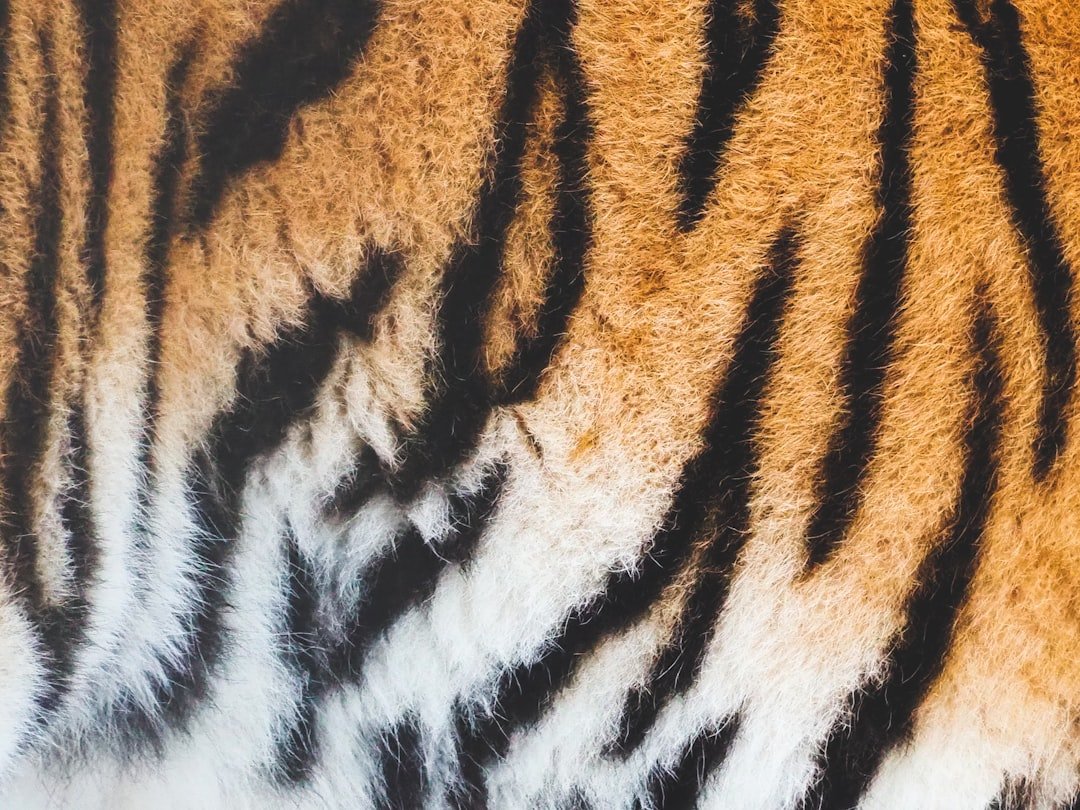
For decades, Turing’s ideas about pattern formation remained largely theoretical – brilliant mathematical models that couldn’t be proven in real living creatures. But that’s changing in remarkable ways. Researchers from King’s College London have provided the first experimental evidence confirming a great British mathematician’s theory of how biological patterns such as tiger stripes or leopard spots are formed. The study, funded by the Medical Research Council and published online in Nature Genetics, not only demonstrates a mechanism which is likely to be widely relevant in vertebrate development, but also provides confidence that chemicals called morphogens, which control these patterns, can be used in regenerative medicine to differentiate stem cells into tissue.
The breakthrough came from studying something completely different from tigers – the ridged patterns inside mouse mouths. The researchers were able to identify the specific morphogens involved in this process — FGF (Fibroblast Growth Factor) and Shh (Sonic Hedgehog — so-called because laboratory fruit flies lacking the fly version have extra bristles on their bodies). They showed that when these morphogens’ activity is increased or decreased, the pattern of the ridges in the mouth palate are affected in ways predicted by Turing’s equations.
For the first time the actual morphogens involved in this process have been identified and the team were able to see exactly the effects predicted by Turing’s 60-year-old speculative theory. This validation has opened up entirely new avenues for understanding how complex patterns emerge in nature.
Each Tiger’s Unique Identity Card
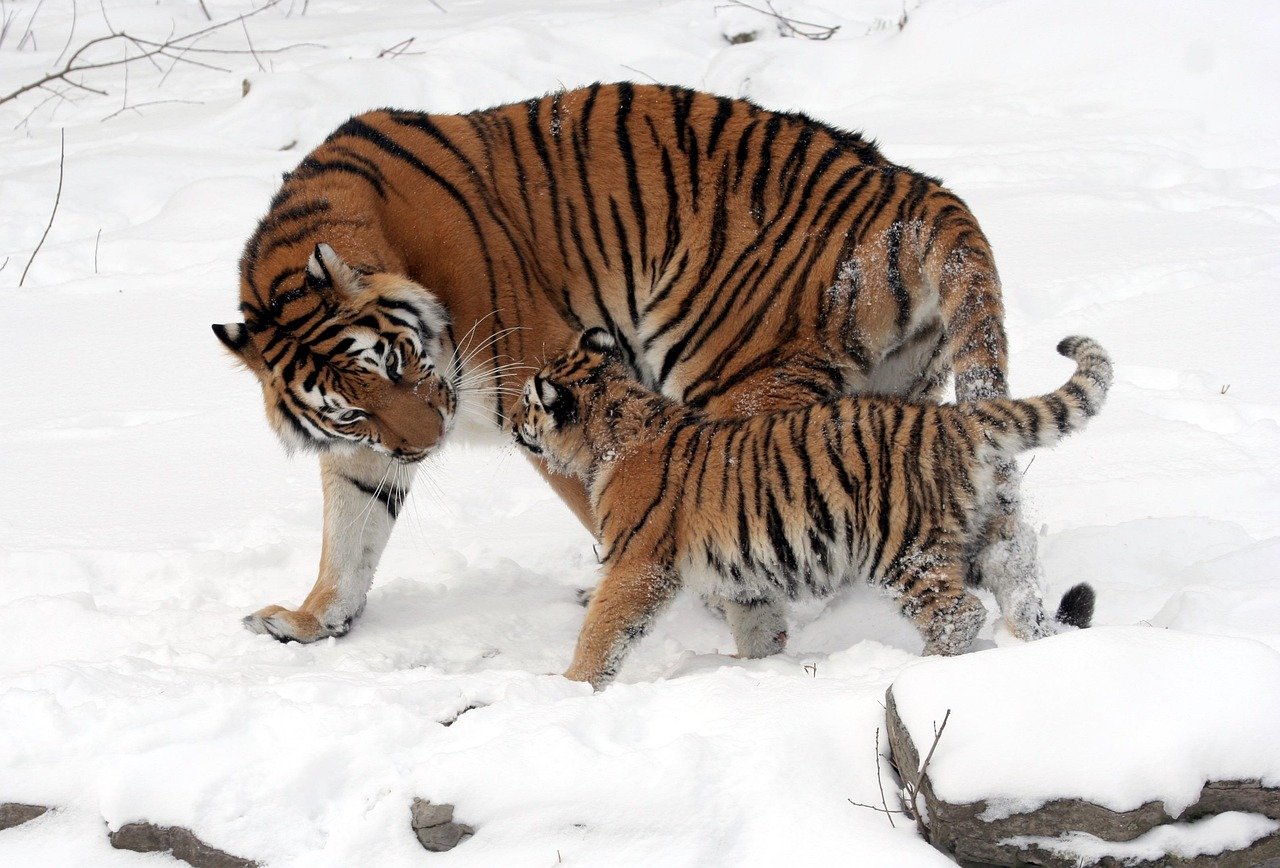
In the world of wildlife conservation, tiger stripes have become nature’s own identification system. Because of this, researchers can use stripe patterns to identify different individuals when studying tigers in the wild. Each tigers unique stripe patterns are as unique as human fingerprints, enabling individual identification crucial for tracking in the wild. This uniqueness isn’t just a cool fact – it’s become a crucial tool for protecting these endangered cats.
Modern technology has revolutionized how scientists use this natural ID system. Advances in technology have allowed researchers to develop deep convolutional neural networks and algorithms capable of recognizing these patterns from photographs. The use of these technologies isn’t limited to scientific research; they also empower citizen scientists and conservationists in their efforts to protect these majestic creatures.
Like the human fingerprint, each tiger’s stripe pattern is one of a kind. Individual tigers are identified by their unique stripes and counted using camera trap images to estimate population numbers, this could be in a protected area or on a bigger scale for a country population estimate. Imagine having a database of tiger “fingerprints” that helps researchers track individual animals across vast territories – that’s exactly what’s happening in conservation efforts worldwide.
Stripes as Nature’s Perfect Camouflage

While stripes serve as identity markers for scientists, their original evolutionary purpose was much more practical: staying hidden from prey. Their striped coats help them blend into their surroundings, where they lie in wait for prey to pass by. At the opportune moment, tigers pounce on their prey, take it to the ground and finish the kill by breaking or biting the neck. Those bold stripes that seem so obvious to us actually work like an invisibility cloak in the wild.
The black stripes on their fur help break up their outline and make them less visible to prey. It’s a phenomenon called “disruptive coloration” – the stripes confuse the eye and make it hard to see where the tiger begins and the background vegetation ends. This is especially effective because many of the animals tigers hunt don’t see colors the same way humans do.
Different tiger populations have even evolved slightly different stripe patterns to match their specific environments. Tigers that inhabit swamps and wetlands, as seen in parts of the Sundarbans mangrove forest in Bangladesh and India, may have a coat with a somewhat lighter and more muted orange hue to blend with the vegetation and water reflections. In mountainous regions, like the Russian Far East and parts of China and North Korea, Siberian tigers adapt their camouflage with thicker fur, often appearing more golden in color.
Conservation Through Stripe Science

Understanding tiger stripes has become far more than an academic exercise – it’s now a crucial weapon in the fight to save these magnificent creatures from extinction. By analyzing the stripe patterns, researchers can not only identify individual tigers but also gain insights into their movements, health, and behavior. This information is vital for effective conservation strategies, aiding in the fight against poaching and habitat loss which threaten tiger populations across the globe.
The power of stripe identification extends to fighting illegal wildlife trade too. Having a national database of DNA samples of all captive tigers helps the authorities to definitively distinguish between individual tigers, determine whether tigers have been moved between facilities, and figure out if registered tigers have entered illegal markets. Adding photographs of tigers’ stripe patterns to this database would also improve the management of these facilities. Each tiger’s stripe patterns are unique, like our fingerprints, and would help authorities identify tigers in the facilities but also tigers that are found in the illegal trade.
Such knowledge is crucial for managing fragmented populations and implementing effective conservation corridors. Tiger stripes also enable the identification of key individuals, such as breeding females and dominant males, which are essential for population growth and genetic diversity. Every stripe pattern photographed and catalogued represents another small victory in the race to save wild tiger populations.
In a world where roughly 5,574 wild tigers remain, every individual matters tremendously. The science of tiger stripes has evolved from a curiosity about beautiful patterns to a sophisticated toolkit for conservation. Each tiger’s stripe patterns are completely unique, as distinct as human fingerprints, which means every photo, every sighting, and every identified individual adds another piece to the complex puzzle of tiger survival.
These stripes represent far more than mere beauty – they’re nature’s signature on each individual, a genetic masterpiece millions of years in the making, and our best hope for ensuring that future generations will still marvel at these magnificent striped hunters prowling through Asian forests. The next time you see a tiger, remember that you’re looking at a walking work of art whose pattern has never existed before and will never exist again. Pretty incredible, isn’t it?

Jan loves Wildlife and Animals and is one of the founders of Animals Around The Globe. He holds an MSc in Finance & Economics and is a passionate PADI Open Water Diver. His favorite animals are Mountain Gorillas, Tigers, and Great White Sharks. He lived in South Africa, Germany, the USA, Ireland, Italy, China, and Australia. Before AATG, Jan worked for Google, Axel Springer, BMW and others.



